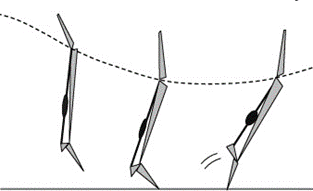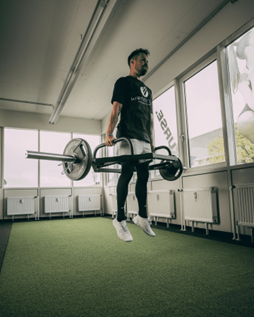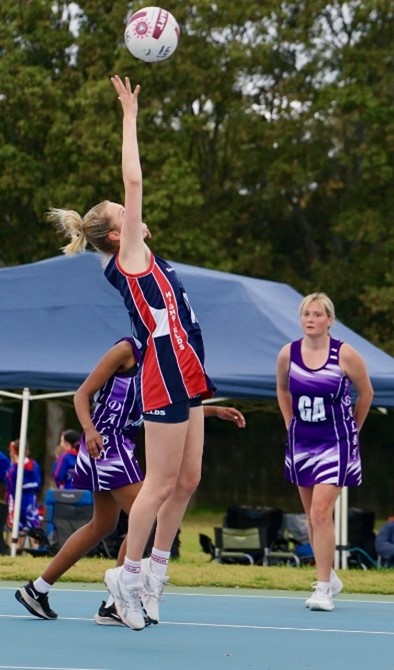In the previous article we talked about the importance of identifying our athletes reactive strength index (RSI) along with other quantifiable data regarding strength and power to help inform our training programs. After we have done this, we can then effectively implement specific training methods based on this, and the athletes training age, and season type (in-season, off-season). These include plyometric training, both assisted and resisted plyometrics included, accentuated eccentric loading (AEL), contrast and French contrast training and post-activation potentiation.

Plyometric training is a commonly used type of training which involves exerting high number of forces over a short period of time. This is seen in exercises such as a box jump, triple jump, and hurdle hops. This type of training is effective in developing muscular power, improving the stretch-shortening cycle (SSC) and can also improve tendon elasticity, which all benefit jump performance. There are many methods to plyometric training as well, which can all play a role in an athletes training, depending on their training age, time of season, and performance goals.
The first sub-type of plyometrics I will introduce is assisted plyometrics. This can be done by adding assistance to a normal plyometric movement, such as a vertical or broad jump. An example of this type of training is anchoring a band above head height and holding onto this band while completing a vertical jump. This is effective as the assistance allows the athlete to produce more force during the concentric part of the movement, while also decreasing the amount of eccentric load during landing. This option is commonly used in specific preparation pre-season blocks, or in-season where turnaround between games is short. This is because assisted plyometrics allows the athlete to put in maximal intent, and have beneficial adaptations, without overloading the muscle tissues during busy periods.

The opposite of assisted plyometrics is resisted plyos, this option is a very common method utilised by athletes across a wide range of sports, ages, and training goals. This is because this type of plyometric training is widely regarded as the most effective in improving maximal force production. Resisted plyometrics achieve this through adding an increased external stimulus on the athlete, therefore increasing the athlete’s intent during the plyometrics movement. This can result in improved rate of force development and muscle fibre recruitment. An example of this type of training is a barbell squat jump, or a band resisted broad jump. Due to the increased neural load, and increased time under tension (TUT), this option is most used in pre-season, or in longer week blocks between game to avoid detrimental performance effects in the short term.
Accentuated eccentric loading is a type of exercise where the eccentric portion of the jump. is loaded, however the load is dropped during the concentric phase of the jump, such as a DB drop jump. Other variations that place an increased amount of load in the eccentric phase of movement are eccentric squats and depth jumps. Accentuated eccentric training allows you to adapt to more force during the lowering phase of a jump. This can result in greater force production during the subsequent concentric phase, leading to higher jumps. Emphasising the eccentric portions of a jump, will also improve the ability of the athlete to rapidly produce force. Similar to resisted plyometrics, this training technique is most often used in the pre-season as higher levels of muscular fatigue and delayed-onset muscle soreness is associated with increased time under eccentric load.
French Contrast Training is another training method used to improve explosive power and performance. It combines four different types of exercises:
- Heavy Resistance Lift: The first exercise involves a heavy strength movement like squats or deadlifts. This is aimed at recruiting many motor units and priming the nervous system.
- Plyometric Exercise: Immediately following the heavy lift, athletes perform a plyometric exercise such as depth jumps or box jumps. This takes advantage of the increased neural activation from the heavy lift, enhancing the power output in the jump.
- Ballistic Exercise: Next a ballistic movement will be completed, such as a jump squat or medicine ball granny toss.
- Finally an assisted plyometric will be completed, such as a band assisted vertical jump.

This type of training effectively utilises post-activation potentiation (PAP) to improve jump performance. PAP is a physiological phenomenon where a muscle’s force output temporarily increases after it has been subjected to a heavy resistance exercise. This enhanced muscle function can improve performance in explosive activities like sprinting and jumping. Using French contrast training is a proven option for improving jump performance, but it is mostly completed by athletes with an extended training age due to complexity of these movements.
These different methods of training all have a place within athletic development and are commonly used in our Athlete Development Program to improve jump performance. If you are interested in knowing more about this type of training, get in contact, and our team of Strength and Conditioning coaches will be happy to have a chat!



